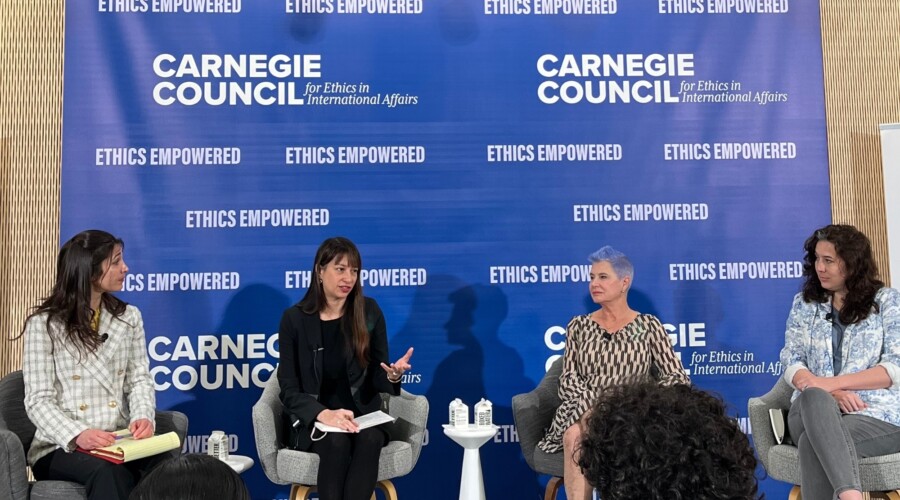Diya (not her real name), a young girl in Jharkhand, India, regularly experiences violence at the hands of her father. The injuries she sustains from her father's abuse are often so bad that she's forced to miss school as a result.
Unfortunately for Diya, her school doesn't necessarily offer her a safe retreat where she can avoid violent behavior. In Diya's community, as in many communities across India, violence outside of—and inside of—schools is far too often deemed acceptable.
When many of us think about schools we think about the important role they should be playing in educating and shaping the lives of children for decades to come. They're an important place for children to learn, to grow, and to understand what they're capable of. And yet despite this important role, schools are also a place where harassment, sexual and physical violence, teasing, and bullying are all too common throughout hallways and in classrooms. This behavior harms boys' and girls' growth, and undermines efforts to educate and empower the next generation.
What's at the root of this behavior? Often, it's inequitable gender norms that promote and reinforce violence. These gender norms seek to put parameters around what boys and girls are capable of. For example, gender norms, like the ones Diya faces on a daily basis, often indicate that boys are more important, that girls' roles are limited to doing housework and becoming a wife and mother, while encouraging boys to play, be rough, and dream of careers as engineers, doctors, and lawyers. These norms result in imbalances in the workforce, high rates of child marriage, and a lack of enthusiasm around girls' education.
These inequitable norms also tell women and girls that enduring violence is part of being a daughter, wife, or mother, and tell men that sometimes, you must be violent to "be a man" or "keep your wife in line." As a result of these deeply entrenched beliefs about what's acceptable, the International Center for Research on Women (ICRW) found that six in ten Indian men admitted to using violence to assert their dominance over their partner if she wanted to step out of her traditional role or was unable to meet the expectation of bearing a son.
Schools, which many assume to be safe places, often serve as places where these norms are propagated and condoned, either through actual violence or through textbooks, processes, and practices. For example, in text books, characters often follow stereotypical gender roles. Work and activities assigned by teachers to girls and boys fall along similar lines; boys are expected to do "heavy work," such as moving table/chairs and managing money, while girls are expected to do "softer work" such as welcoming guests, serving, and cleaning. These inequitable processes and practices have a profound impact on boys' and girls' understanding of relationships and their interactions for the rest of their lives. When boys think that girls are less equal than they are, they're more likely to exhibit discriminatory behavior, including perpetrating violence throughout the course of their lives.
Given this dynamic, we at the International Center for Research on Women (ICRW) found ourselves at a crossroads. We know how critical education can be for empowering the next generation, but also that social institutions can harbor and reinforce inequitable gender norms that undercut our efforts to achieve gender equality.
Effectively addressing—and often correcting—inequitable gender norms requires a targeted approach that helps children re-think what they've learned. This is where the Gender Equity Movement in Schools —or GEMS—program comes in. GEMS, which is taught during the school day to students ages 12 to 14, engages boys and girls in discussions and encourages reflection on gender inequality, giving students the tools to talk about gender inequality outside their classroom and within their own communities. GEMS also gives teachers the skills to be able to talk about gender inequality throughout their schoolday's curriculum. The program, in short, is working to redefine masculinity and the way that children think about their roles in society.
Given the program's important mission, we had to ask critical questions about GEMS, including whether or not the program was successful in re-shaping norms and challenging gender stereotypes. The answer, through ICRW's research, is a resounding yes.
We found that over the course of the program in Mumbai there was a significant increase in recognition of different forms of violence and gradual decline in the perpetration of physical violence, with improved willingness to inform on perpetrators. In the schools where the GEMS program was implemented, the percentage of students who reported perpetrating violence on fellow students went down from 56 percent to 52 percent after the second year of implementation, while this proportion increased from 44 percent to 50 percent in comparison schools. Though the change in reported violence at intervention schools may seem small, it is statistically significant and indicates that students who participated in GEMS were better able to deal with conflict without using violence after second year of intervention.
Attitudes of students towards traditional roles of women and girls, particularly among girls, changed substantially. The proportion of girls disagreeing with the statement "Bathing and feeding kids are the mother's responsibility" increased from 13 percent to 41 percent throughout intervention schools, while no significant change was observed in comparison schools. Similarly, more students expressed an intention to intervene when witnessing any form of violence.
What's more, participating students grew more supportive of girls pursuing higher education and marrying later in life. The proportion of boys who supported age at marriage for girls to be 21 years or older increased from 11 percent to 21 percent in the intervention schools, while it decreased from 18 percent to 15 percent in comparison schools.
When asked if GEMS has brought about change, one young boy told ICRW, "Of course. Now I have completely stopped all hitting and beating. There is no point you see . . . what we want can be talked out. That is what I explain to my friends and brother as well."
The program proved to be so successful that it grew from a small pilot program of just 45 public schools throughout Mumbai, to more than 20,000 schools across the state of Maharashtra, impacting more than 1 million students. Now, GEMS has expanded even further and can be found in 40 schools in two districts of the Indian state of Jharkhand, as well as in 350 schools across Bangladesh and 25 schools in Hanoi, Vietnam.
The need to expand GEMS
Our research on the pilot program in Mumbai told us that the program could be successful. We knew that both violence and gender discrimination were common in schools throughout Asia, and therefore expanding the program was necessary in order to make as big of an impact as we possibly could. Like any big program, the process of expanding GEMS in India and into Bangladesh and Vietnam was not without its challenges, which have forced ICRW and its partners to rethink how we structure the program.
During the implementation and expansion of the program, it was the little things that hindered progress. Delays in getting GEMS approved by the government and in the allocation and release of funds critical to implement the program were common. As a result, timelines were constantly shifting, which limited how teachers could implement the program because they had to squeeze in GEMS sessions between academic and other already-planned extracurricular activities.
Additionally, given the broad scale of the program, the government of Maharashtra decided to train only one teacher per school in the GEMS curriculum, which put pressure on just one individual to implement the program within an entire school. More often than not, the teacher chosen to implement the program, called a sugamkarta, was a woman, underscoring how, far too often, issues around gender are seen as "women's issues." When the sugamkarta tried to engage male teachers, she often faced opposition because male teachers didn't recognize the need to challenge inequitable gender norms. Once again, expectations about what's a "man's job" and what's a "woman's job" reared their ugly heads.
Despite these challenges, our research continues to show that where GEMS is being implemented, it is making a difference in the lives of boys and girls. While GEMS may not be able to eliminate violence overnight, it has made serious headway in how children and teachers tolerate violent behavior. One teacher told us that violence "has definitely reduced. More students come and ask us to help and intervene in stopping fights. The difference now is that they listen to us when we try and stop them. We ourselves never used to think that many of our actions were violent. Now we realize the impacts on ourselves and others."
GEMS is even making a difference in Diya's life. After Diya confided to her class about the violence she faces at home, students from the class, as well as teachers, went to her house together to talk to her parents about the abuse. The girl's teacher remarked, "Though the violence has not completely stopped as verbal abuse still persists, she has got some relief and her father also knows that it is not right. It's a small step, but a step indeed." This is an example of how GEMS is giving schools the tools to ensure girls like Diya no longer have to endure abuse and that she will feel supported by both her parents and peers.
GEMS is a series of steps forward. It's not a silver bullet, which will tackle all inequalities faced by children in just one school lesson. Rather it's a way to start unpacking what has underpinned discrimination against girls for decades.
To make a bigger impact, government, civil society organizations, and donors must recognize the need to implement broader policies and programs that seek to dismantle gender inequalities, such as gender-based violence and discrimination, which inhibit the potential of India's tens of millions of adolescent girls. Our research tells us that when we start challenging gender norms early in life, we are successful in reshaping the way society views discrimination. The important thing to remember, however, is that while we must start early, we can't end early. Programs and policies must continue to challenge discriminatory attitudes throughout boys' and girls' lives, not just for a brief moment in time.
With GEMS, we're taking steps towards gender equality. But without broader commitment from the government, parents, and communities, we have a long way to go until we can really take that giant leap forward to end discrimination against girls once and for all.




